Edgar Allan Poe’s Ligeia: Dead or Alive?
Edgar Allan Poe’s famous short story, ‘Ligeia’, was first published in 1838. Like Poe’s other works, this story befits the genre of Gothic Literature. It is horrific in its portrayal of the supernatural and it is preoccupied with death and suffering.
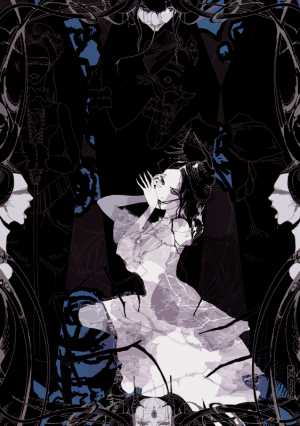
‘Ligeia’ is narrated entirely by its nameless protagonist. This is done so in first person perspective. The story follows the protagonist as he details the love shared between him and his deceased wife named Ligeia. He recounts the day that she passed away and the sorrow it caused him. Amidst his deep suffering, he marries another woman, Lady Rowena Trevanion. Important for the development of the story, she is described as Ligeia’s physical opposite. This marriage is unhappy, as the narrator admits to disliking his new spouse. He is then made to suffer further when his second wife falls ill and passes away. The protagonist is deeply affected by the events of his life.
The story then offers a horrifying twist, true to the Gothic genre. In the gloom and darkness of midnight, the deceased Lady Rowena appears revived, only to once again fall back into death. This process occurs continually throughout the night until she is finally, wholly resurrected. At this point, she no longer resembles Lady Rowena in the eyes of the tormented narrator. Instead, he believes it is the deceased Ligeia who now stands as a revenant before him. The narrator does not explain this, leaving readers unsure of what really happened.
Poe’s short story ‘Ligeia’ is vague. It offers an unsatisfying conclusion that leaves readers with more questions than answers. The author gives the characters only rudimentary descriptions; they are not fleshed out enough to appear as rounded people. Upon first read, this may seem like the work of a bad writer, a confusing writer, a writer who leaves gaps in his narrative.
However, Edgar Allan Poe was intentional in creating a vague story. He uses the concept of liminality to make his story unclear. More specifically, this liminality is used to make readers ask the rather Gothic question, “is Ligeia dead or alive?” A close reading of the text reveals hints as to the author’s intention in the story’s use of liminal spaces.
Art Imitating Life?
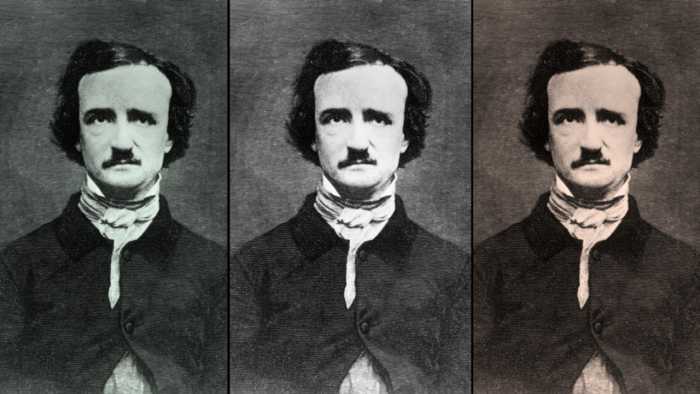
Before analysing ‘Ligeia,’ knowing the context of the author’s life is important in understanding how this story came to be. The suffering experienced by Poe’s narrator may not have been invented as pure fiction. Growing up, Poe experienced the death of several of the important women in his life. According to several biographies written about the author, Poe’s mother passed away before he reached the age of three. Then as a teenager, Poe had to endure the death of his foster-mother also. This repetition is reminiscent of the repetition of death ‘Ligeia’s’ narrator experiences.
There is evidence of the loss of a maternal figure within Poe’s story. After the death of his first wife, the protagonist expresses that “without Ligeia I was but as a child groping benighted.” This could simply be Poe’s use of simile to further depict the mourning of the narrator. However, this also suggests a kind of maternal relationship between the pair. This is, perhaps, more so than a romantic relationship. Regardless of how this line is interpreted, the loss suffered by the author potentially inspired and influenced his depiction of the protagonist’s suffering.
While not important to how he created ‘Ligeia’, Poe’s young wife fell ill years after this story was published. After being diagnosed with tuberculosis in 1842, she was then housebound. It was not until five years later that she passed away. At the end of this lengthy health battle, Poe fell into a deep depression. ‘Ligeia’ appears tragically prophetic in depicting the enduring illness and eventual death of a spouse that Poe would later experience. Perhaps in this instance, life imitates art.
Liminality in ‘Ligeia’
Before understanding why Poe’s story is vague, first we must understand how it is vague. The story’s sense of uncertainty is created in part by the, originally anthropological, concept of liminality. Cambridge Dictionary offers the simplest definition for liminality, describing it as “between or belonging to two different places, states, etc.” Ligeia appears to occupy the liminal space between life and death. She is both dead and alive, whilst also being neither dead nor alive.
Literary critic, Elizabeth Bronfen simplifies this understanding in her book, Over Her Dead Body: Death, Femininity and Aesthetic. 1 Here, and as this article will go on to explain, she proposes that Ligeia occupies several liminal spaces, in life, death, and in resurrection.
In Life
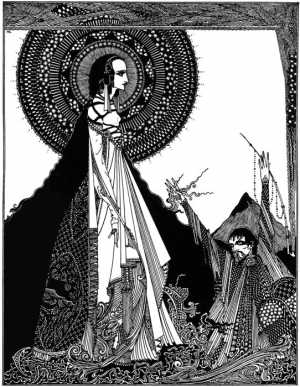
The first section of Poe’s short story discusses Ligeia in life. The narrator describes her as having “skin rivalling the purest ivory.” She also has “raven-black” hair and eyes that are “the most brilliant of black.” Her physical appearance is unlike the typical Gothic heroine who is often blue-eyed with fair hair. Her appearance insinuates an element of darkness and gloom about her. Perhaps, already linking her to death. Within the story, Poe’s narrator implies that she is not a tangible human being. The line, “she came and departed as a shadow,” suggests that she is something of an unknowable substance. This imagery depicts her as being not-quite alive.
More importantly to Ligeia’s liminality, however, is that the reader never hears from her directly. It is only through the protagonist’s perspective, and memories, that we get to know the woman. The character of Ligeia is never developed and consequently remains a two-dimensional figure. She is depicted as merely an abstract and distant idea. Despite being described as a living being, she is never given the detail required to ‘come to life’ on the page, so to speak.
The narrator also appears to have used his imagination to construct an idealised version of his wife. He cannot remember where they first met, nor can he remember Ligeia’s surname. In fact, the only topic in which the protagonist says “my memory fails me not” is that of her physical appearance. Readers are left to question whether this remembered version of Ligeia is who she really was. It is impossible to discern if this is a real person that is being described.
The confusing and vague depictions of Liegia position her between life and death. While this part of the story is detailing her as alive, there is no certainty to her status as a living human. Though she is not dead, in many ways, she is also not really alive.
In Death
After Ligeia’s passing, the grieving narrator refuses to let her truly die. As discussed earlier, she is kept partly alive in his memory constantly. Throughout the story, the protagonist exclaims, “Ligeia! Ligeia!” This is seen as an act of continually bringing her back to life. He admits this himself:
“I would call aloud upon her name, during the silence of the night, or among the sheltered recesses of the glens by day, as if, through the wild eagerness, the solemn passion, the consuming ardor of my longing for the departed, I could restore her to the pathway she had abandoned –ah, could it be forever? –upon the earth.”
Edgar Allan Poe, ‘Ligeia.’
This grief-stricken refusal to accept the finality of Ligeia’s death leaves her hovering in a liminal space. The narrator’s continual hope that she is not gone disallows her to truly be dead. She still exists in every aspect of the protagonist’s life. For that, despite being dead, she is still partly alive.
In Resurrection
Ligeia’s liminality in life and in death are difficult ideas to comprehend and explain. However, her liminality is most overt at the story’s conclusion. It is here that the protagonist perceives her as potentially resurrected.
The short story’s ending is phrased ambiguously:
“Here then, at least,” I shrieked aloud, “can I never –can I never be mistaken –these are the full, and the black, and the wild eyes –of my lost love –of the lady –of the LADY LIGEIA.”
Edgar Allan Poe, ‘Ligeia.’
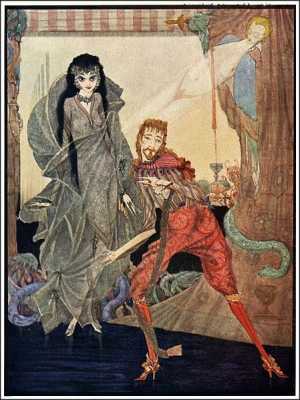
It is here that the story ends. The reader is given no answer as to whether this was Ligeia. Is Ligeia now alive? Is she still dead, and the narrator mistaken? These unanswered questions ensure that Ligeia remains within her liminal space.
If she has been brought back to life, this raises further implications. Is she a living human, the very same human that had formerly passed away? Has she returned as a supernatural being that is not mortally alive? The realms of life and death are blurred significantly. Also blurred is which of those Ligeia now belongs to. Once again, Lady Ligeia is not definitively alive, nor is she definitively dead.
The Unreliable Narrator
The simplest interpretation of this vagueness is that the author has placed everything where it is for the sake of Gothic fiction. The element of not knowing is more unsettling for readers than a clearly defined supernatural being might be. Perhaps the author merely created this unclear story to horrify the reader. Other examples of ‘horror Gothic’ texts, such as Matthew Lewis’ 1796 novel The Monk, use unexplained supernatural beings for shock value.
However, Poe suggests that shock-value was not the purpose of his story. He does this by subtly hinting at several explanations for this vagueness throughout the story. These explanations rest upon the premise that the narrator is somehow impaired. This consequently impairs the reader, as it is only through the protagonist’s eyes that we can see. This intentionally makes him a wholly unreliable narrator. Moreover, these interpretations are often rooted within the historical context of the story’s time of publishing.
The Influence of Opium
Throughout the story, the protagonist makes six separate references to his excessive opium use.
After Ligeia’s death, the protagonist claims that he “had become a bounden slave in the trammels of opium.” More than this, he states that most aspects of his life had been affected by his drug use. His perception of Ligeia’s beauty is likened to “the radiance of an opium-dream.”
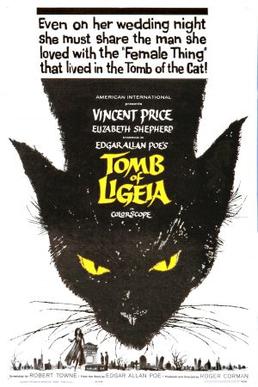
It is conceivable that the narrator was drug-affected to such an extent that he was no longer able to see clearly. He is only able to report half-information. This could have been the reason that he thought he saw an invisible figure poison his second wife. This, and the later reappearance of Ligeia, are easily explained as hallucinations. As an unreliable narrator, however, he was not able to discern that this was merely his imagination. Poe hints to this as an explanation for what otherwise appear to be gaps in his narrative.
Contextually, the opium trade was booming in The United States during the Victorian Era (1837-1901). A medical journal published in the U.S. in 1833 describes opium addiction in the same language as Poe. Both describe addicts as being a “slave” to the drug. Addiction to opium became so prolific in the U.S. that it was classified as an epidemic by the end of the nineteenth century. Poe was accused of being an opium addict himself by several of his writing peers. They often implied that the drug was responsible for his creativity. Therefore, it seems appropriate to conclude that Poe created ‘Ligeia’ by exploiting the societal anxieties pertaining to opium addiction. Furthermore, he purposefully used this idea of addiction to impair his narrator.
Madness and Obsession
Another potential explanation involves a theme which Poe uses regularly in his fiction. That is, the theme of madness and obsession. The narrator is clear in expressing that he has suffered throughout his life, and that this has taken its toll on his mental health:
“She died; –and I, crushed into the very dust with sorrow, could no longer endure the lonely desolation of my dwelling.”
Edgar Allan Poe, ‘Ligeia.’
In his writing, Poe treats the idea of ‘madness’ generally as a kind of delusion. It impairs the way in which his characters behave. An example of this is The Tell-Tale Heart. In this story, the protagonist’s madness shapes his violent actions, the calculating way he is able to cover up these actions, and the paranoia that convinces himself that he will be caught. ‘Madness’ clouds the judgement of those deemed ‘mad.’
Perhaps, then, this is what occurred for the narrator of ‘Ligeia.’ In his poor mental state, he is unable to clearly discern for himself whether his beloved is dead or alive. As the reader is only able to see these events through his eyes, we are similarly restricted from seeing the truth.
Mental illness, or what was then generalised as ‘madness,’ was not treated with respect during the nineteenth century. Those deemed mentally ill were incarcerated in asylums that used cruel and unhelpful treatments. Melancholy was perceived as a type of ‘madness’ which seems to fit the affliction of ‘Ligeia’s’ narrator. However, by this point in history, medical experts had understood that mental illness was psychological. By assuming that Poe is hinting at madness and obsession in this story as another manner of impairing his narrator, the liminality of Lady Ligeia is somewhat explained.
A Guilty Conscience?
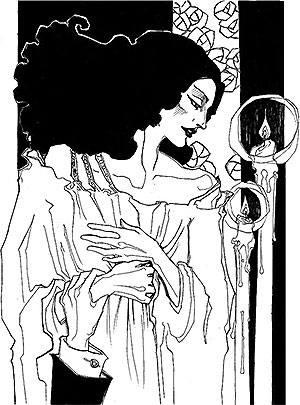
The story offers another possible explanation for the gaps in Poe’s story. While not rooted within a specific historical context, nor supported by concrete hints within the story, the uncertainties of ‘Ligeia’ may merely be a product of the narrator’s guilt.
Poe is not shy about the narrator’s dislike for Lady Rowena, his second wife. In fact, he admittedly “loathed her with a hatred belonging more to demon than to man.” This detestation makes the following occurrence seem suspicious:
“It was then that I became distinctly aware of a gentle footfall upon the carpet, and near the couch; and in a second thereafter, as Rowena was in the act of raising the wine to her lips, I saw, or may have dreamed that I saw, fall within the goblet, as if from some invisible spring in the atmosphere of the room, three or four large drops of a brilliant and ruby colored fluid. If this I saw –not so Rowena.”
Edgar Allan Poe, ‘Ligeia.’
Considering the other instances of murder expressed in Poe’s literature, it is not wholly unrealistic to conclude that the narrator murdered his second wife. Perhaps his unhappiness with marriage led him to poison the spouse he admits to hating. But, when attacked by guilt he has tried to explain it away as a freak, supernatural occurrence. His first wife coming back to life is not explained properly because it cannot be. It is mere fiction created by the guilty narrator to convince us, the readers, that he is innocent.

Edgar Allan Poe has intentionally constructed ‘Ligeia’ vaguely. The liminality of Lady Ligeia was not merely poor writing on the author’s behalf. Whether it be the result of guilt, madness, or addiction, Poe intended to leave readers puzzled. Undoubtedly, due to its uncertainties, this story can be interpreted differently than how it has been interpreted here. Such is the joy of good literature.
Works Cited
- Bronfen, Elisabeth. Over Her Dead Body: Death, Femininity and Aesthetic. New York: Routledge. 1992. Print. ↩
What do you think? Leave a comment.











This is definitely one of Poe’s more memorable stories. As for its ambiguity, it is very comfortable and not at all like some other Gothic fiction I could mention (Turn of the Screw, anyone?). At least you can tell more or less what is going on without burning all your brain cells.
By the way, I loved the artwork used here. Definitely fits the subject of the article!
It is my favourite Poe story, by far! That being said, I was thoroughly confused the first time I read it. It’s a story that grows on you.
I was really happy with the artworks I was able to find too! There are some very talented people, indeed.
What makes this piece interesting to be read and also re-read is the fact that it could be read in more than one perspective. With that being said, I like your interpretation of it.
That’s a definite perk of its vagueness, you can make almost anything of it!!
It could be interpreted according to Freud’s ideas about the conscious and the unconscious. All the events in the story could happen in the narrator’s mind (his unconscious).
Yes! Absolutely, I think that is another perfectly plausible interpretation (and one that definitely has been argued by literary scholars)!
Yes. The narrator doesn’t really remember how he met his wife. Also, he is under the opium’s effect most of the time which means that he is not really aware of what’s happening. He mentions something about his uncertainty whether his wife coming back to life or not. Etc…
This is a wonderful example of gothic literature. All dark and gloomy!
Yes indeed! All of his stories share the same gloom – he’s very good at it.
Edgar’s description of Ligeia is beautiful.
Great work. Been on a Poe reading binge lately. I’m starting to see a lot of similarities between his tales. A friend told me Poe really just wrote the same four or five stories over and over again. It might not be as bad as all that, but I can see where he’s coming from.
That’s certainly an interesting perspective, and I can see that too. You have to wonder if the similarities were a deliberate choice or if he just had a style that meant his stories would end up similar. Either way, he was definitely a talented writer.
Maybe there’s a reason about only half a dozen are constantly recommended and the rest remain forgotten.
Horror movies or horror writers today have nothing on Poe.
The great beauty that cannot survive. :'(
Nice to see your piece published, Samantha! Edgar Allan Poe is one of those famous authors whose work I’ve neglected to explore at length, so it was great to do a bit of a literary deep-dive with your exploration of this short story. I find I keep stumbling onto your work here (whether it’s topic suggestions or articles) because you raise important, poignant questions and are an engaging writer. I’m excited to see what else you have in store for The Artifice! 🙂
Poe, I find, is a great writer to delve into. Not least because, unlike other writers of the nineteenth century, he keeps his work short and brief, whilst still offering plenty of room for interpretation and analysis! Also, eighteenth and nineteenth century Gothic fiction has always been a love of mine.
But thank you so much for your kind words!! I always appreciate to know that my writing is being enjoyed! 🙂 🙂
I’ve read some analysis and so forth to see it from other perspectives, but I’m still firmly fond of the one I initially built.
The contrast between Ligeia and Rowena is very apparent, Ligeia is darkness, irrationality, vast knowledge and beauty, her alien eyes resemble the unknown which is usually appealing, endless possibilities, captivating, alluring; she’s everything that would be considered tempting to a human being.
Rowena is light, simple beauty, the “new” life, some sort of resuscitation from the darkness, resurrection of the narrator’s goodness and rationality.
But just like people’s pasts haunt them, the narrator’s past (who happens to be Ligeia) haunts him, figuratively and literally, and I think the fact that it can be interpreted in two ways (one being that being on opium caused the narrator to hallucinate his previous love’s return, the other being that his love did actually come back) is even more brilliant. For one thing, it shows how every one has their own reality even though facts are solid and the same.
I quite like this interpretation!
Brilliant thought-inducing themes. Poe never fails to mesmerize.
The best thing I like about Edgar Allan Poe is his description of things; he has an amazing way to describe and narrate incidents and I feel their real existence in front of my eyes.
The ending scene where he’s sitting in the bedroom really stuck it for me. I don’t know why but I find it so beautiful that the narrator is just sitting in a room of faded bliss, obsessing and hallucinating about his ex-wife and so unbothered by the dead body and the joy he finds when his 1st wife has taken over the body, I really don’t know I just find it kind of sweet.
If you plan to read this story, keep Poe close, but keep your dictionary closer!
Ah yes. That is definitely sound advice!!
This is a Goth’s dream story, it has all the goth element, tomb, opium.
I had to read this book for class some months ago, and it was so creepy and full of imagery.
The descriptions of the women he obsesses about in his stories are lovely, and there’s something deliciously terrifying and honest about all the macabre madness.
What makes this a great story to analyse is that the line between reality and fiction are blurred that the reader is left to guess. Poe does not spell it out for you adding to the mystery of the piece.
I like that about this story too!
For me, Poe just spent too much time on verbal portraiture of Ligeia the woman, and not enough time freaking me out with what could have been a truly great ghost story!
I tend to agree with that. More of a head-scratcher than a horror story. I wonder if it would have had the same reception at its time of being published?
This. We get it, Poe, Ligeia is hot. Get on with the story!
Bookmarking this article for halloween. Gimme those Halloween vibes, Edgar!
I adore Poe’s writing. I feel he really knows how to grasp character and atmosphere and I love how this story demonstrates the power of memory and how sometimes we cannot tell the difference between what’s real and what isn’t.
I like that too! I feel as though I have never read ANYTHING like Poe. He’s a very unique story teller.
This could be classified as romance gone wrong, lol.
You’re not wrong!
The Raven go hand-in-hand with this, both detailing the insanity brought on by the grief and loss of a wife.
There is no one like Poe. I believe that his writing style (leaving open ends, brilliant descriptions, strategically pointed omissions) helps him create the image he wants the reader to see. He can’t paint or play music, so he has to use written language effectively in order to invoke terror in his readers and satisfy an emotional appeal. I see much of his influence on some good modern horror writers and motion picture horror productions.
I think that is a really good point. Reading his work, you get the feeling that everything is there for a very specific and intentional reason.
A good essay. I always marvel at how interesting and complex Poe’s writings really are from reading essays such as your essay. I last read anything by him when I was an undergraduate, maybe I should take the time to pick him up again.
I couldn’t agree more. His stories are so short but he packs a lot into them. A remarkable writer, absolutely.
Thanks for a fascinating read. I confess ‘Ligeia’ is one the few works by Poe I haven’t yet read. I love the idea of working with an unreliable narrator. It’s like a battle of wits between the writer and the reader, forcing the reader to re-evaluate almost every word on the page and dig deeper. I’ll send a link for this article to a friend of mine. I’m sure he’ll appreciate it as much as I have.
I completely agree. I think most authors spend so much time trying to convince readers that their chosen narrator is the most reliable. Quite an interesting task altogether to convey that the narrator cannot be trusted.
This can and should be made into an amazing and subtly terrifying horror short film!
Read this for my American Short Fiction class. You make me want to pick it up again!
I recommend it, its one story that I can say with certainty that one read through is not enough!
If you want to describe a woman, her essence, her beauty, her soul, you should take notes from Edgar Allan Poe, literally.
Poe would have been a fine psychologist, or at the very least, he would have served as an interesting patient.
An interesting patient certainly – he seems like he really suffered in his lifetime.
Really good and creepy Gothic psychological horror story. First analysis I read of it and the only one I need. Thank you.
Thank you!
Enabling Ligeia to be reborn is similar to the ancient Egyptian cycle of life, death, and rebirth.
The climax did not affect me as much as Poe’s Morella did.
This is why you don’t date opium.
I love Poe. I love the mix of light and dark and strangeness and beauty that is present in all of his work. His language is beautiful and rich.
Thank you Samantha, great take on explaining Ligeia, one of my favorite E. A. Poe stories.
Thank YOU for reading!
I read this story very late at night, after having listened to hours of horror stories for most of the preceding day. It was intense. 🙂
I liked Poe’s description of the marriage room of Rowena and the protagonist; it is strange that he would have such a tapestry, and it is wonderful that it exists.
It’s a great story combining elements of substance abuse and reality! Been years since I read it. Going to read it now, for the 10th time.
Edgar Allan Poe is a spook genius.
I don’t know exactly what Poe wanted to say in this story but what if it’s all just an illusion?
Hmm.. perhaps it is. I think that could be a reasonable interpretation, indeed.
This is one of the Edgar Allan Poe short stories that I never tire of.
I’m not sure if there is or if I understood the massage of “Ligeia” but it is a well-crafted story.
I recommend the audio version of this by Vincent Price. Amazing.
Thank you for outlining the different interpretations and allowing them all to be co-valid. It is interesting to ponder how anyone can “portray” uncertainty, without pinning it down. If it was pinned down, ironically it would somehow become certain. Is Poe trying to show us an uncertainty where you are no longer certain if you know or don’t know anything? That would be a real horror.
I think you make a really good point here! The uncertainty is crucial in this story.
Great short story. It feels like unexpected kick in the stomach.
His style of writing is really transporting.
Very intriguing analysis, but for me; the unreliable narrator points to Rowena as his first love. His second marriage is merely an attempt to fill the void Rowena left. The second wife just did not fit. He murdered her somehow to relieve his frustration with her. Then, alone again, his addiction brought back to life. A flicker at first, but with continued drug use she became flesh, as he fell into complete disillusionment.
Another reading of this story is that Poe was fundamentally a misogynist with such a narrow feminine ideal that it does not matter so much as to whether or not Ligeia is dead or alive because he did not view women as fully human – like men. They are instead objects to be either romanticized or ostracized solely on merit of how they make men feel. I implore readers to recognize that much of Poe’s trademarked madness was sometimes plain old misogyny.
A great analysis of Ligeia with the use of the concept of liminality. Had never thought of liminality even when I read the story for so many times. In short, I enjoy your article very much.
Ligeia seems to serve a similar role to Poe as Beatrice did for Allegheri.